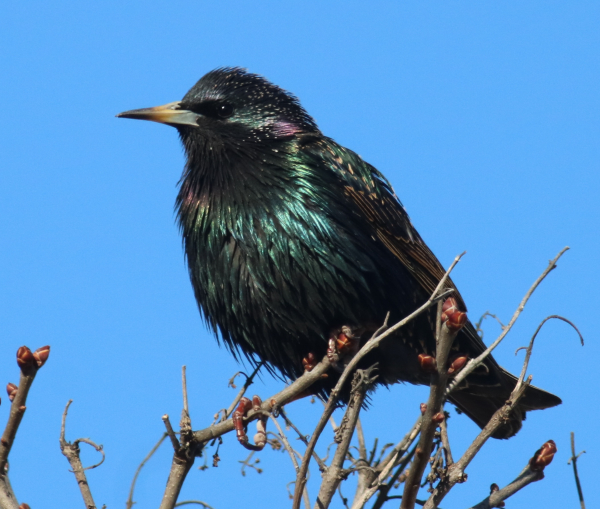
A greater diversity of bird species plays an important role for human well-being in Europe (European Startling photo by Paul Konrad).
|
According an interesting new study, a diversity of bird species in your area plays an important role for human well-being across Europe. Birds are well-suited as indicators of biological diversity because (1) birds are among the most visible members of animate nature, particularly in urban areas; (2) birds’ songs can often be heard, even if the birds are not visible; (3) most birds are popular and people enjoy observing them, and (4) a larger number of bird species can be found in areas with a high proportion of near-natural and diverse landscapes with green spaces and water bodies.
“Europeans are particularly satisfied with their lives if their immediate surroundings host a high species diversity,” explained the study’s lead author, Joel Methorst, a doctoral researcher at the Senckenberg Biodiversity and Climate Research Center, and Goethe University in Frankfurt, Germany. “According to our results, the happiest Europeans are people who experience many different bird species daily, or live in near-natural surroundings that attract many species.” Bird species diversity in various locations was measured as documented in the European breeding bird atlas.
At the same time, the researchers brought attention to impending health-related problems. “The Global Assessment 2019 by the World Biodiversity Council and studies of bird species in agricultural landscapes in Europe clearly show that the biological diversity of birds is currently experiencing a dramatic decline. This poses a risk that human well-being will suffer from an impoverished nature. Nature conservation therefore not only ensures our material basis of life, but it also constitutes an investment in the mental and physical well-being of us all,” added Methorst in conclusion.
To review the Science Daily report that this article is based on, refer to https://www.sciencedaily.com/releases/2020/12/201204110246.htm